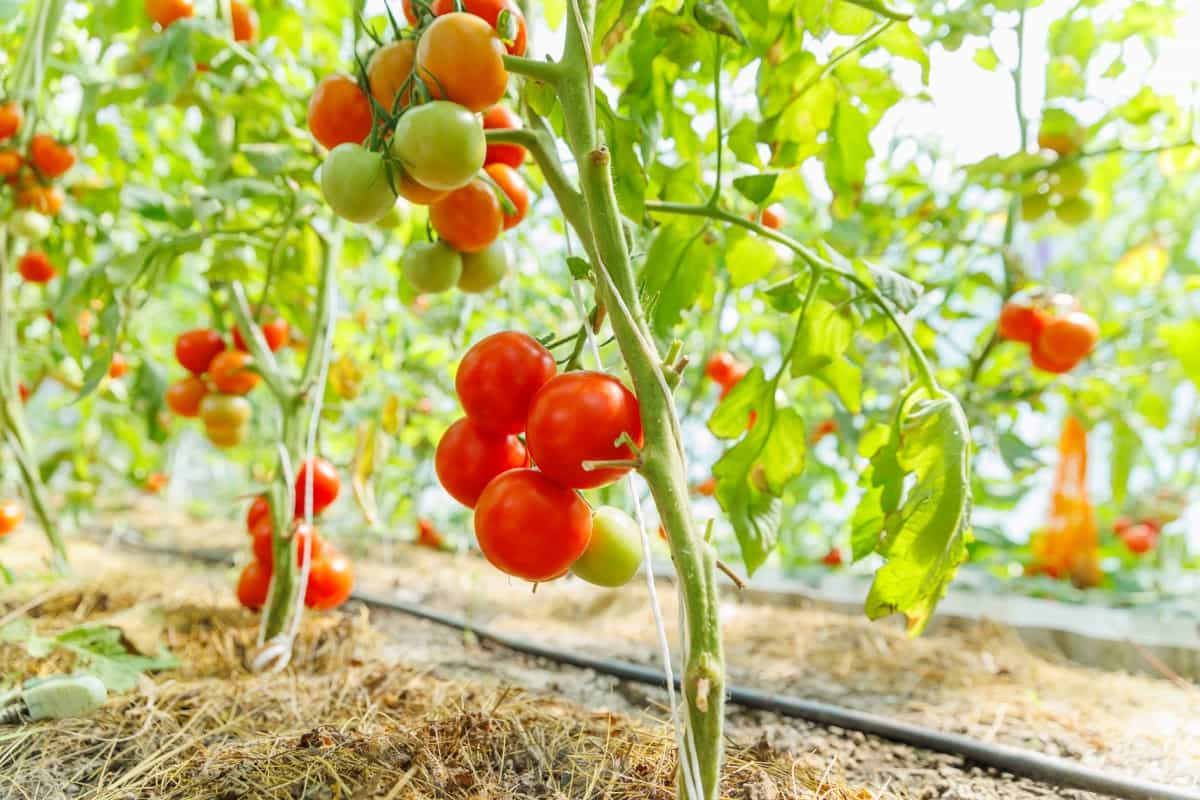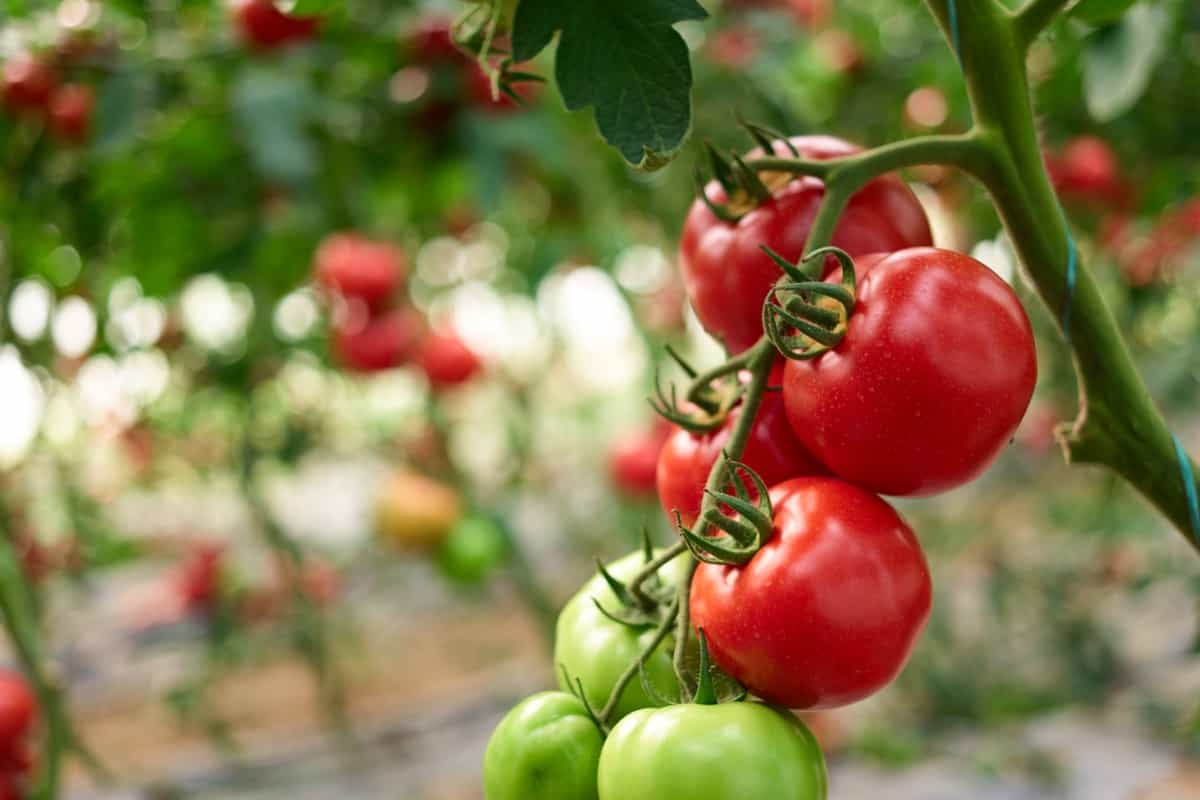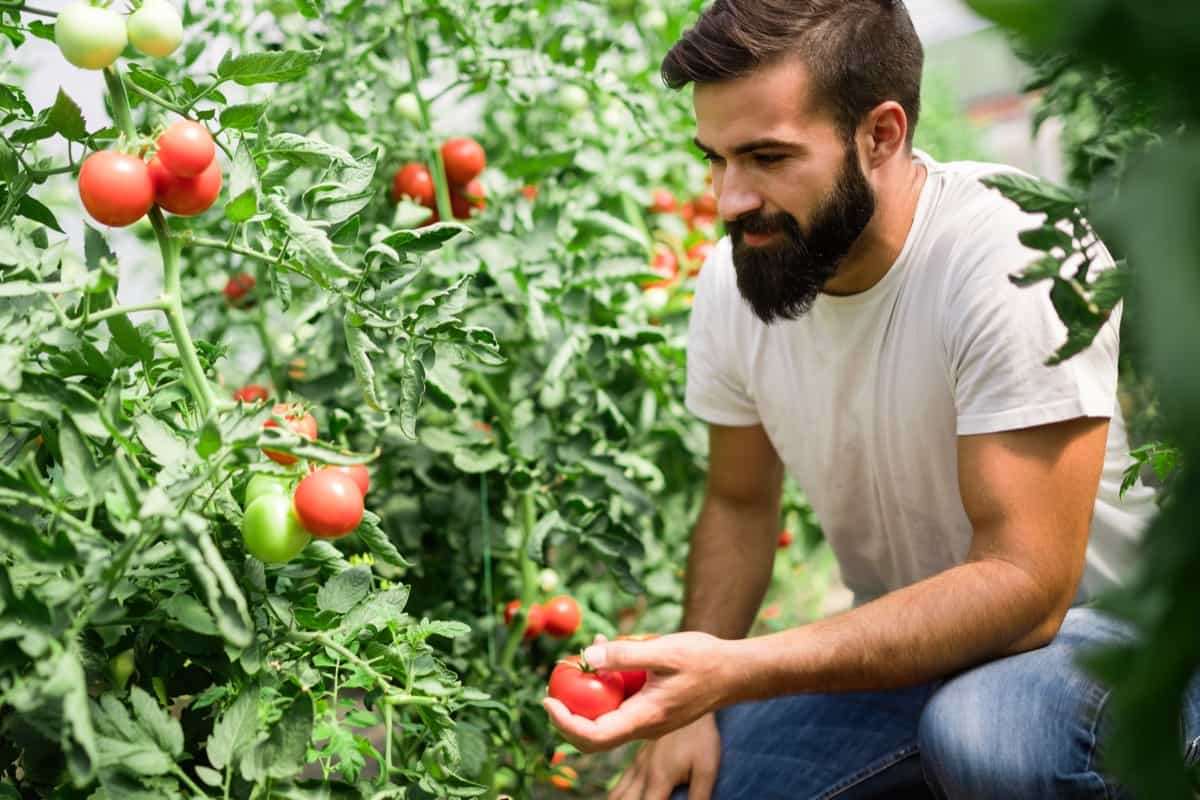Tomato farming is a dynamic agricultural venture with various economic considerations to analyze for success. Understanding the cost structure of tomato farming is essential, incorporating both direct costs like seeds and fertilizers and indirect costs such as marketing and distribution.

To make informed decisions, farmers must scrutinize revenue streams, assess profitability, and calculate the return on investment (ROI) in tomato farming. This article aims to unravel the economic aspects, explore cost reduction strategies, and guide on optimizing costs and maximizing profits for a 1-acre tomato farm production.
Costs and Profits for 1 Acre and 1 Hectare Tomato Production
What Factors Affect the Costs and Profits of Tomato Farming
Various factors influence the costs and profits of tomato farming. Weather conditions, pest and disease prevalence, and market demand are crucial in determining the venture’s profitability. The choice of seeds, fertilization, and pest control methods also substantially impact the cost structure and, ultimately, the return on investment (ROI) in tomato farming. Knowledge of the market, including consumer demand and price fluctuations, is pivotal for realizing substantial revenue streams in tomato farming.
Cost Structure of Tomato Production for 1-acre
The cost structure of tomato farming per acre encompasses various elements essential for production. These range from initial investments like land preparation to variable and fixed costs incurred during the farming process. Initial investments cover seed purchasing and land preparation, forming the base upon which other costs are built. Variable costs in tomato farming fluctuate based on the production stages and include expenses like fertilizers and labor. Contrarily, fixed costs remain constant, encompassing land leasing and machinery depreciation.
Initial Investment for 1-acre Tomato Farming
Initial investment costs are crucial in setting up a tomato farm. These include expenses incurred in land preparation, such as renting a tractor, which costs around $150 per day, and applying fertilizers at approximately $100 per acre. Furthermore, selecting and purchasing seeds constitute the initial investment, amounting to about $50 per acre. These primary investments lay the foundation for the growth and development of the tomato plants, setting the stage for subsequent costs.
In case you missed it: Tomato Farming in the Fall: Instructions to Grow Tomatoes in the Cooler Months

Variable Costs in 1-acre Tomato Farming
Variable costs in tomato farming constitute a significant portion of the expenditure and vary based on different stages of production. Such costs include the application of fertilizers and pesticides, amounting to around $200 per acre. Irrigation expenses, essential for tomato growth, are also variable, costing about $150 per acre. Labor costs for activities like picking and packing tomatoes contribute to the variable costs, averaging around $100 per acre. These direct costs fluctuate depending on the farming practices and the specific needs of the tomato plants during various growth stages.
Fixed Costs in 1-acre Tomato Farming
Fixed costs in tomato farming are constant expenses that do not vary with the production level. These encompass aspects like machinery depreciation and land lease costs. Fixed costs provide a stable baseline in the cost structure, allowing for more predictable budgeting and financial planning in the tomato farming venture. Recognizing and adequately managing these costs is vital for ensuring sustainability and profitability in the long term.
Yield and Revenue Potential in 1-acre Tomato Farming
Revenue streams in tomato farming derive from the yield and the prevailing market prices. Based on an average yield of 20 tons per acre and a market price of $200 per ton, the expected revenue is substantial. Such a yield would translate to a total revenue of about $4,000 per acre, providing a significant return on investment. Understanding the yield potential and aligning it with market demands is fundamental for maximizing revenue and ensuring profitability in tomato farming.
Assessing Market Prices and Demand for Tomatoes
In evaluating profitability, market prices and demand assessment are indispensable. Variable variations, consumer preferences, and market competition significantly influence tomato prices. Maintaining a keen eye on market trends and adjusting production and marketing strategies in line with demand ensures that the revenue streams are optimized, enhancing the overall profitability of the tomato farming venture.
Evaluating Profitability and Return on Investment in 1-acre Tomato Farming
Profitability and return on investment (ROI) are core considerations in tomato farming. Based on the outlined cost structure, with total costs amounting to $900 per acre and expected revenue being $4,000 per acre, the profit margin is quite appealing. This would mean a profit of $3,100 per acre, representing a substantial ROI and indicating a robust potential for earning. Evaluating these margins is crucial for strategic planning and ensuring that the tomato farming business remains economically viable.
How to Optimize Costs and Maximize Profits in Tomato Farming
Optimizing costs and maximizing profits in tomato farming involves various strategies aimed at cost reduction and enhancing productivity. Effective planning, budgeting, and execution of cost-efficient farming practices contribute to achieving optimal profitability. Selecting the right seeds, utilizing appropriate fertilizers and pest control methods, and aligning production with market demand are essential strategies. This approach ensures that the costs are optimized and the revenue streams are maximized, fostering sustainability and success in tomato farming.
In case you missed it: Effective Strategies for Tomato Grafting: Benefits, Techniques, and Varieties to Consider

Tomato Farming Costs and Profits in a Nutshell (1-acre based) / Tomato Farming Project Report
| Expense/Revenue Category | Details | Cost/Revenue ($) per Acre |
| Land Preparation | ||
| Renting a tractor | 150 | |
| Fertilizer application | 100 | |
| Seed selection and planting | 50 | |
| Crop Management | ||
| Fertilizers and pesticides | 200 | |
| Irrigation | 150 | |
| Labor costs (picking and packing) | 100 | |
| Marketing | ||
| Transportation costs to the market | 100 | |
| Marketing and distribution costs | 50 | |
| Total Costs | 900 | |
| Total Revenue | 20 tons x $200 per ton | 4,000 |
| Profit | Total Revenue – Total Costs (4000 – 900) | 3,100 |
Estimated Profit from 1 Acre and 1 Hectare Tomato Farming
The tomato farming project report reveals a profit of $3,100 per acre when accounting for various expenses and revenue streams. If you grow tomatoes on a hectare of land, you can expect to make around $7,657 in profit.
Estimated Cost for 1 Acre and 1 Hectare Tomato Production
The estimated cost of tomato production is $900 per acre, encompassing initial, variable, and fixed costs. To calculate the cost for a hectare, considering that one hectare is about 2.47 acres, the total cost would be approximately $2,223 per hectare for the above tomato farming project report, assuming the costs scale proportionally.
Frequently Asked Questions (FAQ) Costs and Profits for Tomato Production
What is the Profit per Acre of Tomato Farming?
The profit per acre of tomato farming can vary based on costs and market prices. Considering a model where total costs are $900 per acre and the revenue is $4,000 per acre, the expected profit would be $3,100 per acre.
How Much Does it Cost to Produce a Tomato?
Calculating the cost to produce a single tomato involves dividing the total costs by the yield. If the total cost is $900 per acre and the result is 20 tons (considering one tomato weighs about 150 grams), the cost per tomato would be approximately $0.03.
In case you missed it: Tomato Farming with Mulch: How to Use Organic Materials for Better Soil Health and Yield

What is the Economic Value of Tomatoes?
The economic value of tomatoes encompasses their market price, demand, and contribution to the agricultural sector. With a robust market price and high demand, tomatoes often have a significant economic value, making them a lucrative crop for farmers.
What is the Cost of Cultivation per Hectare of Tomato?
Calculating the cost of cultivation per hectare requires scaling up the costs from an acre. Given that one hectare is equivalent to about 2.47 acres, and the cost per acre is $900, the cost of cultivation per hectare would be approximately $2,223.
Conclusion
Tomato farming presents many economic considerations, from initial investments to operational costs. A meticulous understanding of the cost structure, including direct and indirect costs, is paramount for navigating the complexities of this agricultural venture.
With a structured approach that meticulously considers each cost element and aligns production with market demand, tomato farming can be a lucrative endeavor. By optimizing various cost factors and strategizing effectively to meet market needs, one can maximize profitability and ensure a robust return on investment in tomato farming.
- Feed Your Flock for Less: Top 10 Tips to Save on Chicken Feed
- Ultimate Guide to Ossabaw Island Hog: Breeding, Raising, Diet, and Care
- Hatching Answers: The Top 10 Reasons Your Chickens Aren’t Laying Eggs
- Eggs and Economics: Breaking Down the Cost of Raising Backyard Chickens
- Defend Your Greens: Proven Methods to Keep Iguanas Out of Your Garden
- Ultimate Guide to Cinnamon Queen Chicken: A Comprehensive Guide for Beginners
- Ultimate Guide to California Tan Chicken: Breeding, Raising, Diet, Egg-Production and Care
- Ultimate Guide to Marsh Daisy Chicken: Breeding, Raising, Diet, and Care
- 10 Types of Chicken Farming Businesses You Can Start for Profits